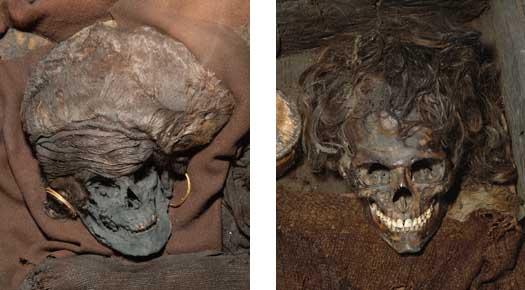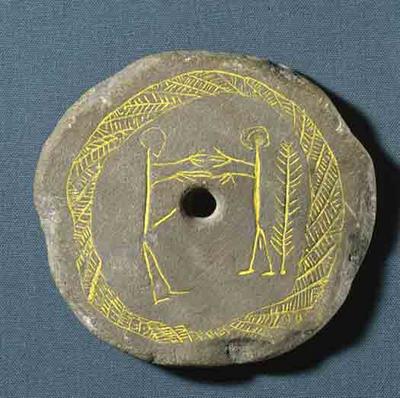Men and women in the Bronze Age
Some of the most famous people from Denmark’s prehistoric period come from the Bronze Age. They lie in oak coffins, dressed in their clothes and with their grave goods, just as they were buried in mounds more than 3000 years ago. As a result of the unusually good conditions of preservation we can get a fairly good picture of how the men and women of the Bronze Age looked, how they were dressed and which objects they used in daily life. In the National Museum’s exhibition you can meet seven of these people - the women from Egtved, Skrydstrup and Borum Eshøj and the men from Muldbjerg, Trindhøj and Borum Eshøj.
Women and men had their own clothing fashions during the Bronze Age. Their grave goods also testify to a difference between the furnishings that women and men were given in the grave. Women often wear a large bronze belt plate on the stomach, while the men’s grave goods frequently include a razor and a sword. Both sexes wore bronze jewellery in the shape of arm bands, clothes pins and ornamental bronze plates known as tutuli. Daggers are found in both men’s and women’s graves. Whether they were men, women or children, great care for the dead was shown during the interment.

The woman from Skrydstrup and the young man from Borum Eshøj are two of the Bronze Age’s most well-known faces.

